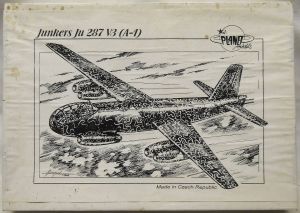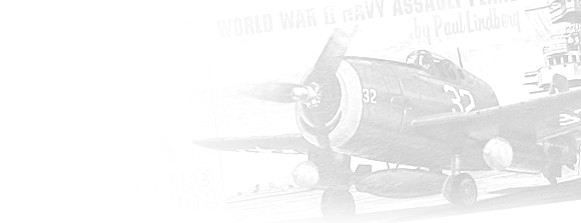Monogram Duesenberg SJ Boattail Speedster, 1/24, 6200
Plastic Model Kit, Box Condition: Good-

$149
Very rare. 1978 issue that features a beautifully cast metal upper body, lower body (fenders) and hood. Highly detailed and well molded featuring full rolling chassis just like the actual car, detailed engine, removable hood, complete interior, opening rumble seat, spare-tire mounted side view mirrors, removable convertible top and more. Molded in gray, white, clear, chrome plate and with rubber tires and metal body parts. Never started. It has been inventoried and NOTE: Missing two small parts - #96 and #99, which are both rear tail light brackets. (These two parts can be easily obtained because they are included in the more common normal issues of the Monogram Duesenberg.) Otherwise complete with all other parts and includes instructions.
Heller Douglas DC-6B - SAS or UTA, 1/72, 80315
Vaccuform Model Kit, Box Condition: Good-
$38
Nicely molded large-scale model with over 100 parts. The kit has never been started. The parts that were factory sealed are still in the sealed bags. The parts that were not factory sealed have been inventoried complete including decals and instructions. NOTE: the decals have some localized stains on the backing sheet and some micro-cracking on the fuselage stripes. Please see the two articles (located on this website) for how to restore and reproduce decals at home.
Revell P2V-7 Neptune - 'S' Issue - (P2V7), 1/104, H239-98
Plastic Model Kit, Box Condition: Good

$125
1955 first issue hardbox with timeless 'S' box art. This series of models is considered the apex of model kit box art and it is easy to understand why they are so popular with collectors today. This was a nicely molded and detailed kit for that time and is molded the correct gloss silver and clear and includes the famous Swivel Base Display Stand. The kit has never been started. It has been inventoried complete with all parts and includes decals and instructions. Please note that the box is only 'good' with general wear, edge wear and short tape tears on the long sides.
Cleveland Boeing B-29 Superfortress - 26.5 Inch Wingspan Industrial Training Model For Tether Flying Or Scale Display, 1/64, AU-200
Wood Model Kit, Box Condition: Good-

$68
This rare model is part of the excellent industrial training series. Cleveland was famous for true-scale models and this one can be built for scale tethered flying or scale static display. This model features high quality balsa printwood, factory-cut spar and stringer stock, balsa blocks as required, fully finished nose and main wheels, covering tissue, color insignia and Cleveland's superb plans with building and flying instructions. Never started and inventoried complete with all parts and includes decals and instructions. Please note that the box is only 'good-' condition. It has general wear as shown, three split corners and a very thin (1/8") sliver of cardboard missing on the upper long box side
Hasegawa Hughes 500 Egg Plane Series, ES013
Plastic Model Kit, Box Condition: Exc

$22
Hasegawa issued the 'Egg Plane' series and they became popular by putting the 'fun' back in modeling. Never started and inventoried complete with all parts and includes decals and instructions.
Aviation USK Hawker Typhoon 1B - RAF EK176 Or ON406 - Bagged, 1/72, AV1005
Plastic Model Kit, Box Condition: Sealed

$16
Still factory sealed. Limited edition injection molded model with excellent moldings, all fine recessed panel lines, 'good' cockpit, fully enclosed wheel bays and more. Includes instructions and decals for the two aircraft listed.
Aviation USK Polikarpov I-152 - With Decals for 9 Finland And USSR Aircraft - Bagged, 1/72, AV1002
Plastic Model Kit, Box Condition: Sealed

$15
Still factory sealed. Limited edition injection molded model with very good moldings, 'good' cockpit and more. Includes instructions and decals for the two aircraft listed.
Revell Lockheed F-94 Starfire 1st Issue - Pre 'S' One Piece Box, 1/56, H201-59
Plastic Model Kit, Box Condition: Exc
$269
Very Rare. This is one of the first three aircraft models issued by Revell back in 1953. This kit is correct with no rivets and no landing gear as well as the unique stand that was only issued with these three kits (and their gift set). This box is in excellent condition, complete with all end flaps and has not been crushed - usually these thin one-piece boxes are in very bad condition. The box has never been repaired. Never started. Inventoried 100% complete with all parts, decals and instructions present. Instructions are printed on the back of the box. It is very interesting to note that this kit is different from the 'Pre-S' issue in the following ways: no rivet detail, almost no panel lines, different part numbers, pilots are a part of the fuselage (busts only), one piece wings and absence of the pods at the half-wingspan line, no landing gear and no holes for such, very early 'Colortone' logo decals and a silver, two piece plastic stand of a unique design that was never used again.
Revell Russian T-34 Tank S Issue, 1/40, H538-129
Plastic Model Kit, Box Condition: Exc+

$110
Rare original hardbox issue from 1958; not the common 1990s reproduction. The model features working flexible treads, rotating turret with elevating gun, optional position hatches, four troops and more. Molded in the correct gloss deep green and with silver flexible tracks. Never started. All parts, decals and instructions have been inventoried 100% complete and are correct for this early issue. The box top has factory-new color and gloss, four solid corners and no repairs. The flaws are corner wear on the left as shown, a very light price tag pull on the left short side and a 3/4" x 3/4" factory tape pull on the long lower side. The original store neatly marked out the '129' price extension on both short side panels and wrote a very small '70' cents next to it.
Aurora Breguet 14 - With Additional Final Issue Decals, 1/48, 141-100
Plastic Model Kit, Box Condition: VG

$62
This kit includes the original decal as well as the greatly improved mid 1970s issue decals. Dated 1963 with superb boxart by Jo Kotula. This is one of Aurora's very popular and successful 1/48 World War 1 aircraft series. It is molded in the correct gloss dark green and black plastic. The kit has no assembly but NOTE: the pilot has been neatly painted. There is no other painting. Inventoried 100% complete with all parts, decals and instructions present.
Dragon Sd.Kfz.164 Nashorn - Armor Pro Issue, 1/72, 7292
Plastic Model Kit, Box Condition: Exc

$15
This kit is from all new molds and very highly detailed with over 190 pieces. Includes brass PE details, flexible, one-piece track by DS, optional position parts and much more. Includes decals plus paint guide for seven different tanks. Never started. The kit either has all of the parts still in the internal factory sealed bags or it has been inventoried complete. Includes decals and instructions.
ICM ZiL-157 Army Truck / ZiL-157 Fuel Truck / BTR-152K Armored Personnel Carrier / BM-24-12 Multiple Rocket Launch System / BM-14-16 Multiple Rocket Launch System, 1/35, 72541
Plastic Model Kit, Box Condition: VG to Exc

$34
SALE!! Includes all five model kits. All kits are never started and the parts are still in the internal factory sealed bags and includes decals and instructions.
Airfix P-51D Mustang -Type 3 Logo - Bagged, 1/72, 98
Plastic Model Kit, Box Condition: Sealed VG

$36
Still factory sealed. Early 1960s bagged issue with a paper header and the Type 3 Airfix logo.
Aurora Mace TM-76 Guided Missile, 1/48, 130-79
Plastic Model Kit, Box Condition: VG++
$229
1958 'Famous Fighters' first and only release. Large 1/48 scale kit of the early guided missile. Includes booster rocket and clear display stand. Inventoried 100% complete with all parts, decals and instructions.
Carl Goldberg Models Matrix 40 Extreme 3-D ARF - 55.25 Inch Wingspan Almost Ready To Fly R/C Aircraft - (Yellow), 12075
Wood Model Kit, Box Condition: Good+

$185
**SAVE! Pick up in Lexington, KY and eliminate all shipping charges. I can meet you at our local Panera Bread for delivery.** This is a large, approximately 85-90% finished RC model that is truly 'Almost Ready To Fly.' Includes all wood airframe that is fully built and covered with premium iron-on covering material, complete hardware package, aluminum landing gear, wheels, fuel tank and more. Never started. Inside, everything is exactly as it left the factory. The smaller parts and most larger parts are still in the factory sealed bags. The few parts never sealed have been inventoried complete. Includes all paperwork. NOTE: this kit came in a very sturdy and thick cardboard box. It will ship in that box wrapped in thick brown paper. If you wish for it to be placed inside another box, let me know in the 'comments' section of checkout but be aware that additional shipping charges will apply.
J Zinger Products ONE 20-8 Wood Propellers NOS - JZ - Bagged
Plastic Model Kit, Box Condition: Good+

$20
NOS (new old stock) from the contents of a R/C-only hobby shop that closed in about 2003. Includes a high quality, brand-new & never used wooden propeller of the size and quantity listed.
Planet Models Junkers Ju-287 V3 (A-1) - (Ju287V3), 1/72, 068
Resin Model Kit, Box Condition: Good

$125
Rare, well detailed, high-definition cast resin model. Never started and the parts are still in the internal factory sealed bags and includes decals and instructions. The Junkers Ju287 series was probably the most advanced WWII bomber to actually fly. Development continued until the end of the war; the Soviets captured the remaining aircraft, moved them to the USSR, completed and flew them. This turned out to be key to future Soviet bomber designs.
Comet Curtiss P-40 Tiger Shark - 18 inch Wingspan Balsa Flying Airplane Model, 3201
Wood Model Kit, Box Condition: Exc

$29
Traditional late 1960s/early1970s stick and tissue flying model that features quality balsa printwood, balsa strip stock for stringers & spars, completely shaped wooden wheels, block & dowel stock as required, rubber motor, plastic propeller, clear material for canopy, covering tissue and full size plans. The kit has never been started. It has been inventoried complete with all parts and includes instructions.
UPC Aichi E13A1 Jake - (ex Marusan), 1/50, 5052-100
Plastic Model Kit, Box Condition: VG+
$39
This large-scale Jake is from quality Marusan molds and the boxart is by Scott Eidson, who did many of the famous paintings for Revell + numerous other UPC boxtops. This kit features moving rudder, elevator and ailerons, folding wings, crew, optional position canopy, elevating and trainable tail gun, depth charges and beaching dolly. Never started. One bag of parts is still factory sealed. The other bag was not sealed and those parts have been inventoried complete including decals and instructions.
AMT 1994 Ford F-150 Lightning Pickup Truck, 1/25, 6153
Plastic Model Kit, Box Condition: VG+

$42
Nice kit with over 115 pieces, detailed engine and engine compartment, opening hood, very good chassis/suspension, full interior and more. Never started and inventoried complete with all parts and includes decals and instructions.
